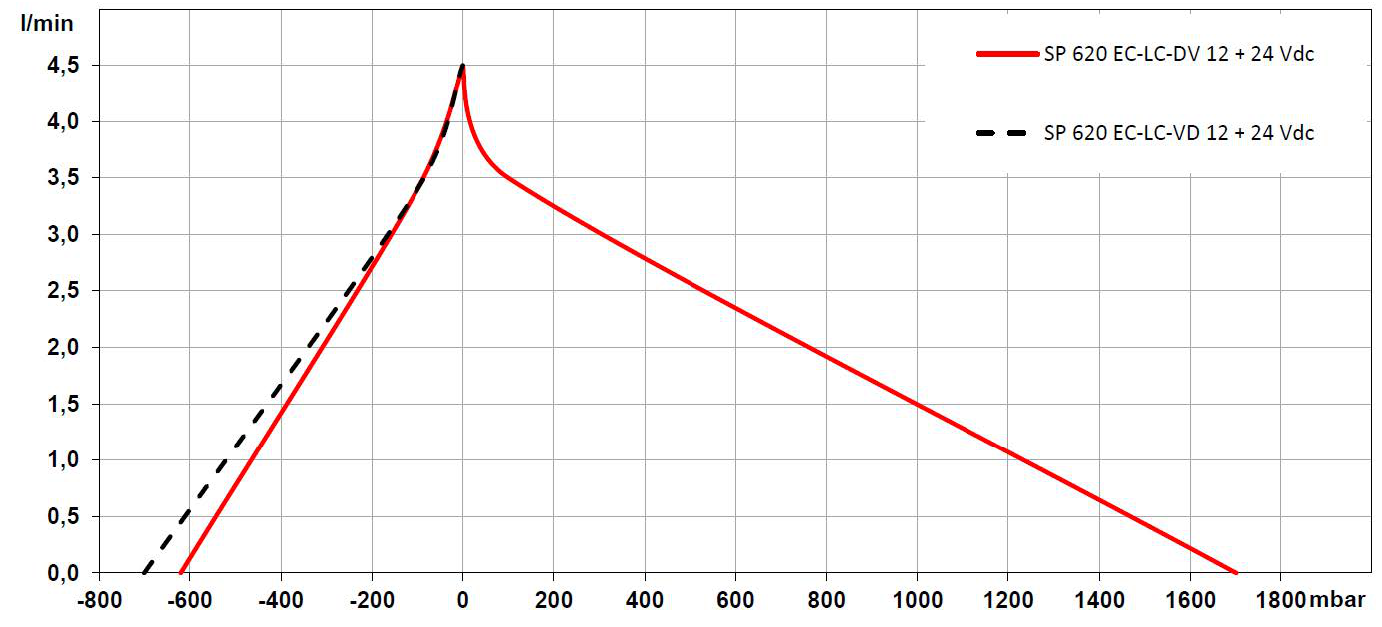- 1 Especificações gerais
- 1.1 Tipos de carcaça
- 1.2 Dimensão & Especificações
- 1.3 Atribuição de tipos de sensores a possíveis combinações de sensores
- 1.3.1 Parte 1: Sensores pré-configurados incl. Tipo de invólucro 1
- 1.3.2 Parte 2: Sensores pré-configurados incl. Tipo de invólucro 2
- 1.3.3 Parte 3: Módulos de sensores individualmente combináveis
- 1.3.4 Parte 4: Carcaças para Módulos de sensores
- 1.3.5 Parte 5: Opções incorporadas
- 1.3.6 Parte 6: Acessórios / Opções
- 1.4 Calibrações
- 1.5 Medição de gases úmidos
- 2 Desvantagens dos sensores eletroquímicos (EC) em comparação com os sensores ópticos RITTER »MultiGas«
- 3 Medidas Preventivas / Protetoras com Medições de Gás
- 4 Escopo do fornecimento
- 5 Configuração
- 6 Sensores Infravermelhos
- 7 Sensores Ultravioleta
- 8 Opções (instalado dentro do invólucro do sensor)
Especificações gerais
Tipos de carcaça


Dimensão & Especificações
Tipo de invólucro 1 Tipo de invólucro 2 A 171 mm 444 mm B 290 mm (1) 305 mm C 86 mm 145 mm Peso, aprox. (2) 2+ kg 6,5 – 8 kg Conexões de entrada/saída de gás Conexão de tubo tipo parafuso PVDF para tubo Ødentro 4 mm, Øfora 6 mm Tubo de conexão PVC Rauclair Ødentro 4 mm, Øfora 6 mm, 3 m Interfaces USB (padrão), RS232 / CANbus / CANopen (opções), MODbus mediante solicitação Fornecimento de energia 24 VDC, incl. unidade de fornecimento de energia plug-in
100 – 240 VAC, 50/60 Hz
(2) Dependendo do tipo e do número de módulos sensores incorporados
Especificações da interface
USB
- Tipo: USB 2.0
- Conector: Tipo B
- Cabo de conexão: Tipo B /
modelo A
RS232
- Tipo: RS232
- Conector: D-sub9 feminino
- Cabo de conexão: D-sub9 1:1 plugue/plugue
CANopen
- Tipo de protocolo: Modo CANopen 2
- Taxa de transmissão: 250 kBaud
- Node ID: 0x31
- Conector: RJ45
CANbus
- Tipo de protocolo: Modo CANbus 1 (não padrão)
- Taxa de transmissão: 250 kBaud
- ID de transmissão: 0x208
- Receber ID: 0x300
- Conector: RJ45
MODbus
- Taxa de transmissão: 250 kBaud
- Databits: 8
- Stopbit: 1
- Parity: None
- Float Definition: IEE754
- Registros disponíveis:
- Read Holding Register 0x03
- Read Input Register 0x04
- Write Single Register 0x06
- Conector: RJ45
Atribuição de tipos de sensores a possíveis combinações de sensores
Parte 1: Sensores pré-configurados incl. Tipo de invólucro 1
Com conexões de gás, interface de dados, fonte de alimentação plug-in - pronto para uso
Tipo de sensor:
RITTER MultiGas xxxArtigo
Não.Grupo de Gases
IRNúmero de Gases Detectáveis
neste GrupoGrupo de Gases
UVNúmero de Gases Detectáveis
neste Grupo xxx = mono IR1 2678 1 xxx = duo IR2 2742 2 xxx = trio IR3 2743 3 xxx = mono UV1 2749 1 xxx = mono UV1
Cl2 30%2763 1 xxx = duo UV2 2766 2 xxx = duo IR1 + UV1 2797 1 1 xxx = trio IR1 + UV2 na 1 2
Parte 2: Sensores pré-configurados incl. Tipo de invólucro 2
Com conexões de gás, interface de dados, fonte de alimentação plug-in - pronto para uso
Tipo de sensor:
RITTER MultiGas xxxArtigo
Não.Grupo de Gases
IRNúmero de Gases Detectáveis
neste GrupoGrupo de Gases
UVNúmero de Gases Detectáveis
neste Grupo xxx = mono UV1
H2S ≤ 5000 ppm2672 1 xxx = mono UV1
H2S ≤ 1%2855 1 xxx = UVRAS 2812 1 xxx = duo IR1
+ H2S ≤ 5000 ppm2959 1 1 xxx = duo IR1
+ (H2S ≤ 1% / NO)2960 1 1
Composição de acordo com a especificação do cliente, entrega incl. carcaça em tamanho adequado de acordo com o número e tipo de módulos - pronto para uso
Tipo de sensor:
RITTER MultiGas xxxArtigo
Não.Grupo de Gases
IRNúmero de Gases Detectáveis
neste GrupoGrupo de Gases
UVNúmero de Gases Detectáveis
neste Grupo xxx = Mod IR1 2813 1 xxx = Mod IR2 2814 2 xxx = Mod IR3 2815 3 xxx = Mod UV1 2830 1 xxx = Mod UV1
Cl2 30%na 1 xxx = Mod UV1
H2S ≤ 5000 ppm2841 1 xxx = Mod UV1
H2S ≤ 1%2856 1 xxx = Mod UV2 2831 2 xxx = Mod UVRAS 2917 3
Parte 4: Carcaças para Módulos de sensores
Montagem de acordo com a especificação do cliente
Tipo de invólucro:
RITTER MultiGasArtigo
Não.Tipo de invólucro Adequado para xxx = Cas-2 (1) 2817 Tipo de invólucro 2 Múltiplos módulos até 444 x 305 x 145 mm xxx = Cas-3 (1) 2818 Tipo de invólucro 3 Múltiplos módulos até 444 x 305 x 189 mm
Parte 5: Opções incorporadas
Tipo de opção:
RITTER MultiGasArtigo
No.Descrição Faixa de medição RMS-O2 (2) (3) 2795 Sensor de oxigênio 0 ‐ 25% RMS-O2 (2) (3) 2767 Sensor de oxigênio 0 – 100% RMS-O2-resist (3) 2824 Sensor de oxigênio
H2S resistente0,5 – 35% RMS-P (2) (3) 2771 Sensor de pressão 800 – 1200 mbar abs.
Resolução <1 mbar RMS-P-resist (3) 2825 Sensor de pressão
H2S resistente0,2 – 3,5 bar abs.
Resolução 2 mbar RMS-H (2) (3) 2773 Sensor de Umidade 0 – 100% RH RMS-A/O 2648 Tensão analógica de saída
0-2 V / 0-5 V / 0-10 V4 portas de saída analógica para 4 concentrações de gás separadas
16 bit RMS‐CasHeat 2954 Carcaça termostatizada Aquecimento e termostato da carcaça do sensor a 45 °C
(3) Disponível apenas como suplemento ao sensor IR ou UV
Parte 6: Acessórios / Opções
Tipo de opção:
RITTER MultiGas xxxArtigo
No.Descrição Faixa de medição xxx = Cal-ZP-N2 2805 Gás de Calibração N2 Para calibração de ponto zero de todos os gases xxx = Flow-V 2806 Mini Válvula de fluxo Controle da vazão da garrafa de gás de calibração
Incl. medidor de pressão xxx = Cal-CG-Cat1 2948 Calibração com gás de transporte especial (Ar, H2, He)
para gases categoria 1Gases da categoria 1:
xxx = Cal-CG-Cat2 2949 Calibração com gás de transporte especial (Ar, H2, He)
para gases categoria 2Gases da categoria 2:
xxx = Cal-ReCal-Cat1 2950 Recalibração para gases categoria 1 Gases da categoria 1:
xxx = Cal-ReCal-Cat2 2951 Recalibração para gases categoria 2 Gases da categoria 2:
Módulo de infravermelho NDIR Módulo ultravioleta NDUV
Calibrações
Dependendo do número de gases a serem analisados, é necessário selecionar um gás de calibração adequado. Além disso, o tipo de gás também influencia o gás de calibração ideal. Devido ao número quase infinito de combinações possíveis, a lista a seguir deve ser entendida apenas como uma primeira visão geral.
Medição de gases úmidos
Ao medir gases úmidos, é essencial evitar a condensação do vapor de água dentro do sensor. O diagrama a seguir mostra a concentração máxima de vapor de água ( = umidade absoluta) em volume % como função da temperatura na pressão padrão de 1013 mbar.
O diagrama mostra:
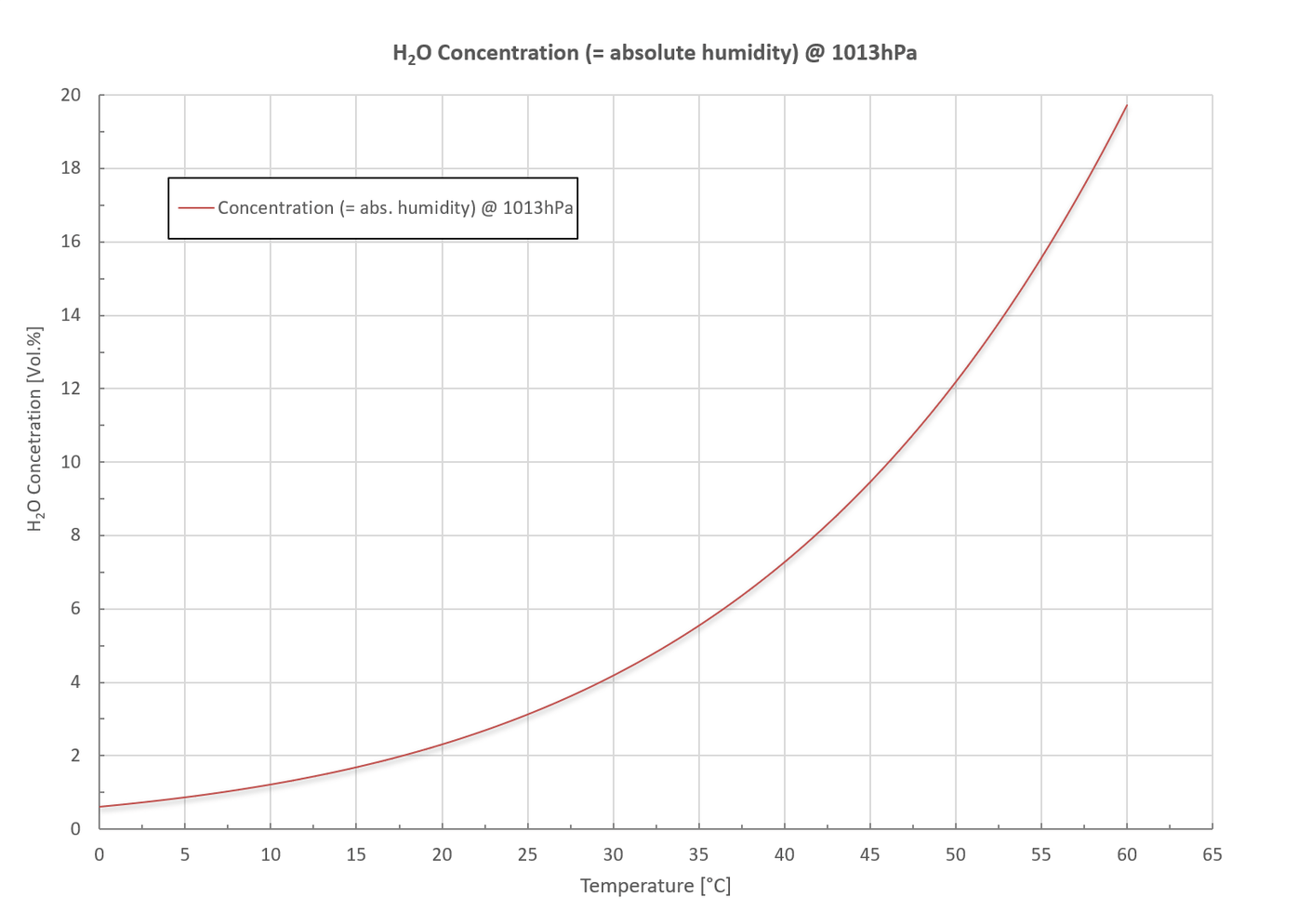
A condensação pode ser evitada com as seguintes medidas:
Com o sensor de umidade opcional, a umidade relativa pode ser medida na faixa de medição de 0 a 100% rH. Além disso, a umidade absoluta também pode ser medida em g/m³. Ambos os valores são exibidos no software fornecido.
Desvantagens dos sensores eletroquímicos (EC) em comparação com os sensores ópticos RITTER »MultiGas«
Medidas Preventivas / Protetoras com Medições de Gás
Importante: Favor especificar as opções desejadas ao fazer o pedido
a) Conexão de tubo adicional para descarga do invólucro
As linhas de gás dentro do invólucro e da cubeta de medição são estanques ao gás por meio de O-rings e outras conexões estanques ao gás. Entretanto, como em todas as conexões, uma taxa de vazamento, por menor que seja, não pode ser descartada. Com uma conexão de tubo adicional para lavagem da carcaça, pode ser evitado um acúmulo do gás de medição dentro da carcaça.
No caso de gases tóxicos ou agressivos, uma linha de sucção pode ser conectada através desta conexão tubular, o que cria uma subpressão dentro da carcaça, impedindo assim que o gás escape da carcaça.
No caso de gases inflamáveis (metano, hidrogênio, etc.), uma linha de pressão ou sucção pode ser conectada através desta conexão tubular criando uma sobrepressão ou subpressão dentro da carcaça, evitando assim o acúmulo de uma mistura de gás inflamável.
Por favor, note que: H2S pode ser percebido como um odor desagradável mesmo na faixa de ppb. Mesmo com um O-ring de vedação, podem ocorrer micro-vazamentos, que podem ser extraídos através da lavagem da carcaça.
b) Carcaça aquecida e termostato
A condensação do gás de medição no interior do sensor deve ser evitada. Isso geralmente pode ser conseguido com um coletor de condensação ou um resfriador de gás. Consulte também »Medição de gases úmidos«. Como alternativa, a parte interna do invólucro do sensor pode ser aquecida e ter um termostato a 45 °C (padrão). O aquecimento não apenas evita a condensação no interior do sensor, mas também garante resultados de medição constantes. Consulte »Aquecimento e termostatação da carcaça do sensor«.
c) Filtro de partículas
Por favor, certifique-se, usando um filtro adequado, de que nenhuma partícula seja transportada para dentro do sensor. Isto pode bloquear as pequenas aberturas das conexões internas. Recomenda-se o uso de filtros de 5 mícrons ou menores.
Escopo do fornecimento
| Nº de itens | Item |
|---|---|
| 1 | Pasta de documentos, incluindo: Certificado de Calibração / Folhas de dados / Manual do software |
| 1 | Sensor na caixa superior da mesa |
| 1 | Unidade de fornecimento de energia plug-in Entrada: 100 – 240 V-AC, 50/60 Hz, 0,4 A Saída: 24 V-DC, 0,5 A, 12 W ou 36 W (H2S / Sensor UVRAS) |
| 1 | Software de aquisição de dados (em cartão de memória USB) |
| 1 | Cabo de conexão: Sensor → PC Padrão: USB V2.0 A/B, 1 m Opção: RS232, 3m |
| 3m | Tubos de Viton Ødentro 4mm / Øfora 6mm |
Configuração
- Desembalar todos os itens cuidadosamente.
- Instale o software de aquisição de dados de acordo com o »RITTER MultiGas Software Manual«.
Não inicie o software neste momento. - Posicionamento do sensor:
- Se o sensor for usado em combinação com um RITTER MilliGascounter, o sensor deve ser posicionado (na direção do fluxo) na frente do MilliGascounter se este MilliGascounter for preenchido com solução de HCl. Caso contrário, o sensor poderia ser danificado pelo vapor HCl que sai do MilliGascounter.
- Coloque o sensor ao lado da fonte de gás.
Por favor, note que: Uma conexão tubular entre a fonte de gás e os sensores que seja a mais curta possível permite um pequeno espaço morto criado pela tubulação. Por sua vez, um pequeno espaço morto permite um tempo de resposta rápido do sensor.
- Conecte o adaptador de energia à tomada »DC 24 V« na parte traseira do sensor e à rede elétrica.
- Conecte o cabo de aquisição de dados ao respectivo soquete na parte traseira do sensor e ao computador:
- Cabo USB para o soquete »USB«
- Cabo RS232 para o soquete »RS 232« (option)
- Conecte a fonte de gás à porta de entrada de gás do sensor usando a tubulação fornecida da seguinte forma:
- Remova as tampas de rosca, assim como as tampas de borracha vermelha da trava de transporte da entrada e saída do gás.
- Deslize a tampa roscada na extremidade do tubo de entrada de gás com a rosca da tampa roscada voltada para a extremidade do tubo.
- Empurrar o tubo para o cone no centro da porta de entrada de gás.
- Deslize a tampa roscada na porta de entrada de gás e aperte-a no lugar, apertando-a à mão.
- Se aplicável: Conecte a porta de saída de gás do sensor a outros componentes, como sacos de amostragem de gás, tubos de escape, etc. A conexão do tubo na porta de saída do gás ocorre da mesma forma descrita acima.
- Ligue o interruptor de alimentação na parte frontal do invólucro do sensor.
- Inicie o software e abra a(s) porta(s) COM do(s) módulo(s) sensor(es) conectado(s) de acordo com o manual do software.
O Sensor RITTER »MultiGas« está agora pronto para uso.
Sensores Infravermelhos
MultiGas Módulo Infravermelho NDIR
Descrição
A análise de gases baseada na técnica NDIR é um método estabelecido para determinar as concentrações de gases em misturas complexas. Os sensores RITTER »MultiGas« utilizam novos componentes ópticos para otimizar os resultados das análises: Até 3 filtros ópticos analisam o gás que flui através do sensor como um fluxo de gás. Os sensores opcionais de oxigênio, pressão e umidade estão em linha com o mesmo fluxo único de gás.
Os módulos internos individuais são selados por meio de conexões de O-ring.
A fim de alcançar uma ótima adaptação à faixa de medição necessária, os comprimentos das células de medição modulares (= cuvetes) podem ser implementados na faixa de 5 mm (grande faixa de medição em nível percentual) até 250 mm (pequena faixa de medição em nível ppm).
As cubetas com comprimento ≥ 20 mm são revestidas com uma camada de ouro resistente para melhorar as propriedades de reflexão na detecção de baixos níveis de concentração e oferecer proteção adicional contra gases levemente corrosivos. As cubetas usadas com gases agressivos também são revestidas de ouro.
As outras partes mecânicas internas são feitas de alumínio, opcionalmente de aço inoxidável.
Para aplicações de resposta rápida, o sistema de medição fornece um resultado estável dentro de t90 ≈ 3 segundos.
A unidade inteira pode ser desmontada para facilitar a manutenção/serviço.
Aplicativos
Especificações
Características Gerais
| Tecnologia de medição: | Sensor NDIR inovador (sensor infravermelho não dispersivo) |
| Gases detectáveis: | CO2 CO N2O CnHm CH4 CF4 SF6 H2O |
| Número de gases detectáveis simultaneamente: | máximo. 3 por unidade de sensor |
| Faixas de medição: | Ver Tabela de faixas de medição |
| Faixa de vazão: | 5 ~ 300 ltr/h Para taxas de fluxo mais altas, o sensor pode ser operado em bypass |
| Pressão máxima de entrada de gás: | 300 mbar |
| Perda de pressão (sem sensores opcionais adicionais): | 10 @ 100 / 35 @ 200 / 70 @ 300 (mbar @ ltr/h) |
| Compensação de temperatura: | Sim |
| Software de aquisição de dados: | Sim |
| Tempo de vida útil da fonte de radiação IR: | > 40 000 h |
| Tigela de medição: | Alumínio, com faixas de medição ≤1% folheado a ouro no interior |
| Vedação de cuvetes: | Anel O de Viton |
| Caixa: | Carcaça de mesa de alta qualidade, alumínio |
| Dimensão (W x H x L): | 171 x 86 x 290 mm |
| Peso: | aprox. 2 kg |
| Conexões de gás: | Conexão de tubo tipo parafuso PVDF para tubo Ød 4 mm, Øf 6 mm |
Dados de medição
| Erro de linearidade: | < ± 1% F.S. |
| Repetibilidade: | ± 0,5% F.S. |
| Estabilidade a longo prazo zero: | < ± 2% F.S. / semana |
| Estabilidade de longo prazo: | < ± 2% F.S. / mês |
| Influência da temperatura de ponto zero: | < 1% F.S. / 10K |
| Influência da temperatura do vão: | < 2% F.S. / 10K |
| Sensibilidade cruzada: | < 2% F.S. |
| Influência da pressão: | < 1.5% / 10hPa a partir do valor medido |
| Tempo de aquecimento: | 2 min |
| Tempo de resposta (t90): | ≈ 3 sec |
| Freqüência de amostragem por software: | ≤ 10 Hz |
| Limite de detecção: | Ver Tabela de limites de detecção |
| Resolução: | 0,5 x limite de detecção |
| Vapor de água: | Nenhuma influência nas medições de CO2 e CH4 |
Características elétricas
| Fornecimento de energia: | 24 VDC incl. ficha de alimentação 100 ~ 240 VAC 50/60 Hz: 24 VDC |
| Consumo médio de energia: | < 1W |
| Interface: | USB (padrão), RS232 / CANbus / CANopen (opções) incl. cabo de transmissão de dados 1 m |
| Saída de tensão analógica (option): | 0 – 2 V / 0 – 5 V / 0 – 10 V |
Parâmetros de gás
| Temperatura de funcionamento: | +15 ~ +45 °C |
| Temperatura de armazenamento: | –20 ~ +60 °C |
| Pressão operacional: | 800 ~ 1200 hPa (mbar) |
| Umidade ambiente: | 0 ~ 95% umidade rel. A condensação no interior do sensor deve ser evitada! |
* Análise de CnHm: A calibração dos sensores para CnHm será realizada com propano. Os hidrocarbonetos aromáticos também são medidos, mas com uma ponderação diferente. Isto significa que a sensibilidade do sensor é significativamente menor com estes gases do que com outros hidrocarbonetos.
Lista de faixas de medição padrão *1 ( e limites de detecção *2 )
| Faixas de medição padrão com os respectivos limites de detecção ( % de F.S. *3 ) | ||||||||||||||||
|---|---|---|---|---|---|---|---|---|---|---|---|---|---|---|---|---|
| 100 Vol.% | 50 Vol.% | 30 Vol.% | 20 Vol.% | 10 Vol.% | 5 Vol.% | 1 Vol.% | 5.000 ppm | 2.000 ppm | 1.000 ppm | 500 ppm | 300 ppm | 100 ppm | 50 ppm | 10 ppm | 1 ppm | |
| CO2 | (< 0.1%) | (< 0.1%) | (< 0.1%) | (< 0.1%) | (< 0.1%) | (< 0.1%) | (< 0.1%) | (< 0.1%) | (< 0.1%) | (< 0.1%) | (< 0.3%) | (< 0.3%) | ||||
| CO | (< 0.2%) | (< 0.2%) | (< 0.2%) | (< 0.2%) | (< 0.2%) | (< 0.2%) | (< 0.2%) | (< 0.3%) | (< 0.5%) | (< 0.5%) | ||||||
| N2O | (< 0.1%) | (< 0.1%) | (< 0.1%) | (< 0.1%) | (< 0.1%) | (< 0.1%) | (< 0.1%) | (< 0.3%) | ||||||||
| CnHm*4 | (< 0.1%) | (< 0.1%) | (< 0.1%) | (< 0.2%) | (< 0.2%) | (< 0.2%) | (< 0.2%) | (< 0.5%) | (< 0.5%) | |||||||
| CH4 | (< 0.1%) | (< 0.1%) | (< 0.1%) | (< 0.1%) | (< 0.1%) | (< 0.1%) | (< 0.1%) | (< 0.3%) | (< 0.5%) | |||||||
| CF4 | (< 0.2%) | (< 0.2%) | (< 0.2%) | (< 0.02%) | (< 0.05%) | |||||||||||
| SF6 | (< 0.1%) | (< 0.1%) | (< 0.1%) | (< 0.2%) | (< 0.5%) | (< 0.3%) | (< 0.3%) | |||||||||
| H2O | ||||||||||||||||
Módulo de infravermelho NDIR Módulo ultravioleta NDUV
Definição de limite de detecção
O Limite de Detecção é o menor valor de medição que pode ser obtido com uma incerteza específica. Esta incerteza inclui a resolução, ruído e estabilidade do sensor de gás para um gás específico e uma faixa de medição específica. Para avaliação do valor limite de detecção, várias medições individuais são feitas nas mesmas condições de medição. Com os resultados de medição única obtidos, é calculado o desvio padrão »Sigma« (σ). Os valores indicados na tabela são iguais ao triplo valor de Sigma.
Recalibrações
Os seguintes intervalos de recalibração são recomendados para os sensores IR:
Sensores Ultravioleta
O sensor UV RITTER »MultiGas« é o primeiro módulo de análise de gás do mundo baseado em LEDs UV miniaturizados. A estabilidade e a vida útil desses UV-LEDs permitem análises de gás de alta precisão até a faixa de ppm. Usando dois UV-LEDs, dois gases podem ser detectados simultaneamente. Além disso, com esta abordagem, é possível realizar a medição de faixas de ppm a Vol.-%. Na faixa espectral de 200 nm a 500 nm, óxidos de nitrogênio (NO + NO2), hidrocarbonetos aromáticos, sulfeto de hidrogênio, ozônio, dióxido de enxofre e cloro podem ser detectados de forma confiável com esta nova plataforma de sensores. A unidade inteira pode ser desmontada para facilitar a manutenção/serviço. Os módulos internos individuais são selados por meio de conexões de O-ring. A fim de alcançar uma ótima adaptação à faixa de medição necessária, os comprimentos das células de medição modulares (= cuvetes) podem ser implementados na faixa de 5 mm (grande faixa de medição em nível percentual) até 250 mm (pequena faixa de medição em nível ppm). Cuvetes com um comprimento ≥ 20 mm são revestidos com uma camada de ouro resistente a fim de melhorar as propriedades de reflexão para detecção de baixo nível de concentração. As cubetas utilizadas com gases agressivos também são revestidas com ouro. As partes mecânicas internas são feitas de alumínio, opcionalmente de aço inoxidável. Para aplicações de resposta rápida, o sistema de medição fornece um resultado estável dentro de t90 ≈ 1-2 segundos. Módulo de infravermelho NDIR Módulo ultravioleta NDUV Definição de limite de detecção O Limite de Detecção é o menor valor de medição que pode ser obtido com uma incerteza específica. Esta incerteza inclui a resolução, ruído e estabilidade do sensor de gás para um gás específico e uma faixa de medição específica. Para avaliação do valor limite de detecção, várias medições individuais são feitas nas mesmas condições de medição. Com os resultados de medição única obtidos, é calculado o desvio padrão »Sigma« (σ). Os valores indicados na tabela são iguais ao triplo valor de Sigma. Os seguintes intervalos de recalibração são recomendados para os sensores UV: Para a detecção de NÃO é utilizada uma EDL (lâmpada de descarga de gás sem eletrodo). Na EDL, N2 e O2 são convertidas em NO e produzem uma radiação UV seletiva. Com esta radiação, é possível uma medição de NO sem sensibilidade cruzada. Este método é denominado espectroscopia de absorção de ressonância UV (UVRAS). Uma combinação da tecnologia UVRAS e NDUV permite a análise simultânea dos gases NO, NO2 e SO2 na faixa inferior de ppm, o que é particularmente importante na análise de gases de combustão (Monitoramento Contínuo de Emissões, CEM). Módulo de infravermelho NDIR Módulo ultravioleta NDUV Definição de limite de detecção O Limite de Detecção é o menor valor de medição que pode ser obtido com uma incerteza específica. Esta incerteza inclui a resolução, ruído e estabilidade do sensor de gás para um gás específico e uma faixa de medição específica. Para avaliação do valor limite de detecção, várias medições individuais são feitas nas mesmas condições de medição. Com os resultados de medição única obtidos, é calculado o desvio padrão »Sigma« (σ). Os valores indicados na tabela são iguais ao triplo valor de Sigma. Os seguintes intervalos de recalibração são recomendados para os sensores UV: O sensor H2S funciona de acordo com o princípio de absorção não dispersiva de UV (NDUV). O comprimento de onda de medição usado está na faixa inferior de nanômetros, o que permite medições sem interferência com vapor de água e hidrocarbonetos. Isso torna o sensor ideal para uso em medições de biogás, pois os gases acompanhantes, como NH3, CO2, CH4 e H2O, não afetam a precisão das medições. Em contraste com os sensores fotométricos NDUV, a vida útil dos sensores eletroquímicos para medição de H2S é limitada. Observe que os dados de vida útil desses sensores são fornecidos para o ar e não para a medição de H2S. Para concentrações de H2S > 200 ppm, a vida útil é reduzida, e para concentrações > 1000 ppm, crítica. Enquanto o desempenho de medição do UV-LED é constante, os sensores EC estão se tornando »surdos«. Módulo de infravermelho NDIR Módulo ultravioleta NDUV Definição de limite de detecção O Limite de Detecção é o menor valor de medição que pode ser obtido com uma incerteza específica. Esta incerteza inclui a resolução, ruído e estabilidade do sensor de gás para um gás específico e uma faixa de medição específica. Para avaliação do valor limite de detecção, várias medições individuais são feitas nas mesmas condições de medição. Com os resultados de medição única obtidos, é calculado o desvio padrão »Sigma« (σ). Os valores indicados na tabela são iguais ao triplo valor de Sigma. Os seguintes intervalos de recalibração são recomendados para os sensores UV: O sensor de oxigênio só está disponível como um módulo de sensor adicional para um sensor NDIR ou NDUV »MultiGas« da RITTER. A concentração de oxigênio medida é exibida no software fornecido. O sensor está embutido na carcaça dos sensores RITTER »MultiGas«. As seguintes versões estão disponíveis: * relacionado a Pa = 1013 hPa, Ta = 25 °C, RH = 50%, fluxo = 2,5 l/min Uma alteração no gás e/ou na pressão atmosférica causa uma alteração no número de moléculas por volume e, portanto, uma alteração na densidade do gás. Essa alteração na densidade, por sua vez, tem uma influência significativa no resultado da medição da concentração pelo sensor. Ao medir a pressão do gás dentro da célula de amostra (cubeta), o valor da medição da concentração é compensado/corrigido. O sensor de pressão permite um aumento na precisão da medição da análise de gás em um fator de 15: O sensor de pressão é sempre integrado aos sensores NDIR »MultiGas« da RITTER como um micro-sensor. Opcionalmente, ele está disponível para os sensores NDUV e é incorporado à caixa do sensor. O valor da pressão medida é exibido no software fornecido. Para gases não agressivos: Para H2S e gases ácidos semelhantes: O sensor de umidade só está disponível como um módulo de sensor adicional para um sensor NDIR ou NDUV »MultiGas« da RITTER. O sensor está embutido na caixa dos sensores RITTER »MultiGas«. Os valores de umidade medidos (absolutos e relativos) são exibidos no software fornecido. O módulo de saída de tensão analógica permite a saída simultânea de até 4 valores diferentes em 4 canais separados: Para conexão a um dispositivo de aquisição de dados analógicos, a porta de saída de tensão analógica fornece, alternativamente, os seguintes níveis de tensão: A faixa de tensão é predefinida de acordo com o pedido e não pode ser alterada pelo usuário. Please note the assignments of the respective gas concentration measurements to the respective channels. These assignments are stated in the Calibration Protocol of the sensor unit. Atribuição de contatos aos canais das medidas de concentração de gás no soquete e no plugue da Saída de Tensão Analógica: Sinais analógicos de saída dos sensores de oxigênio e umidade: Apenas um desses dois sinais pode ser transmitido alternativamente. O cabo de conexão é fornecido com fios abertos para serem conectados ao dispositivo de aquisição de dados analógicos do usuário. As cores dos fios estão listadas na tabela acima. Para evitar a condensação de gás úmido no interior do sensor, o sensor e o invólucro do sensor podem ser aquecidos e termostatados. Por padrão, o controlador de temperatura é predefinido para 45 °C; temperaturas mais baixas são possíveis mediante solicitação. O elemento de aquecimento e o controlador de temperatura são montados no suporte da cubeta de medição. O filtro para partículas de gás é fornecido como um acessório para as aplicações em que o usuário não realiza nenhuma filtragem adicional de gás. Ele foi projetado como um filtro em linha que pode ser facilmente inserido na tubulação de gás na frente de todos os sensores »MultiGas« da RITTER. Por favor, note que: É essencial que as partículas não entrem no sensor, pois isso bloqueará as pequenas aberturas dentro do sensor. Cada sensor é fornecido com um filtro por linha de gás. O filtro é inserido no tubo de suprimento usando uma conexão de rosca do tubo. Filtros adicionais podem ser solicitados ao seu parceiro de distribuição nacional da RITTER. MultiGas Módulo Ultravioleta NDUV
Descrição
Aplicativos
Especificações
Características Gerais
Tecnologia de medição: Sensor NDUV Inovador
(sensor ultravioleta não dispersivo)Gases detectáveis: Número de gases detectáveis simultaneamente: max. 2 Faixas de medição: Ver Tabela de faixas de medição Faixa de vazão: 5 ~ 300 ltr/h
Para taxas de fluxo mais altas, o sensor pode ser operado em bypassPressão máxima de entrada de gás: 300 mbar Perda de pressão (sem sensores opcionais adicionais): 10 @ 100 / 35 @ 200 / 70 @ 300 (mbar @ ltr/h) Compensação de temperatura: Sim Software de aquisição de dados: Sim Tempo de vida útil da fonte de radiação UV: > 8 000 h Tigela de medição: Aço inox com revestimento de silicone no interior Vedação de cuvetes: Anel O de Viton Tubulação interna: FKM / Viton (borracha fluorada) Caixa: Carcaça de mesa de alta qualidade, alumínio Dimensão (L x A x C): 464 x 189 x 305 mm Peso: aprox. 6,5+ kg Conexões de gás: Conexão de tubo tipo parafuso PVDF para tubo Ød 4 mm, Øf 6 mm Dados de medição
Erro de linearidade: < ± 1% F.S. Repetibilidade: ± 0,5% F.S. Estabilidade a longo prazo zero: < ± 1% F.S. / 24 h Estabilidade de longo prazo: < ± 1% F.S. / month Influência da temperatura de ponto zero: < 1% F.S. / 10K Influência da temperatura do vão: < 2% F.S. / 10K Sensibilidade cruzada: < 2% F.S. Influência da pressão: < 1,5% / 10 hPa a partir do valor medido Tempo de aquecimento: 1 min (inicial), < 60 min para especificação completa Tempo de resposta (t90): 1,5 – 15 sec Freqüência de amostragem por software: ≤ 10 Hz Limite de detecção: Ver Tabela de faixas de medição Resolução: 0,5 x limite de detecção Características elétricas
Fornecimento de energia: 24 VDC incl. ficha de alimentação 100 ~ 240 VAC
50/60 Hz: 24 VDC Corrente de abastecimento (pico) < 0,4 A Consumo médio de energia < 7,5 W Interface: USB (padrão)
RS232 / CANbus / CANopen (opções)
incl. cabo de transmissão de dados 1 m Saída de tensão analógica (option): 0-2 V / 0-5 V / 0-10 V Parâmetros de gás
Temperatura de funcionamento: +25 ~ +45 °C Temperatura de armazenamento: –20 ~ +60 °C Pressão operacional: 800 ~ 1200 hPa (mbar) Umidade ambiente: 0 ~ 95% umidade rel.
A condensação no interior do sensor deve ser evitada!Lista de faixas de medição padrão *1 ( e limites de detecção *2 )
Faixas de medição padrão com os respectivos limites de detecção ( % de F.S. *3 ) 100
Vol.%50
Vol.%30
Vol.%20
Vol.%10
Vol.%5
Vol.%1
Vol.%5.000
ppm2.000
ppm1.000
ppm500
ppm300
ppm100
ppm50
ppm10
ppm1
ppm O3
(< 0.1%)
(< 0.1%)
(< 0.1%)
(< 0.2%)
(< 0.5%)
(< 0.5%)
(< 0.5%) CL2
(< 0.1%)
(< 0.1%)
(< 0.1%)
(< 0.1%)
(< 0.1%)
(< 0.1%)
(< 0.1%)
(< 0.2%)
(< 0.5%) SO2
(< 0.1%)
(< 0.1%)
(< 0.1%)
(< 0.1%)
(< 0.1%)
(< 0.1%)
(< 0.1%)
(< 0.1%)
(< 0.5%)
(< 0.5%)
(< 0.5%) H2S
(< 0.1%)
(< 0.1%)
(< 0.1%)
(< 0.1%)
(< 0.2%)
(< 0.5%) NO2
(< 0.1%)
(< 0.1%)
(< 0.1%)
(< 0.2%)
(< 0.2%)
(< 0.5%)
(< 0.5%)
(< 0.5%) NO
(< 0.1%)
(< 0.1%)
(< 0.1%)
(< 0.2%)
(< 0.2%) Recalibrações
MultiGas Módulo Ultravioleta NDUV / UVRAS
Descrição
Aplicativos
Especificações
Características Gerais
Tecnologia de medição: Espectroscopia de absorção de ressonância UV (UVRAS) Gases detectáveis: Número de gases detectáveis simultaneamente: máximo. 3 por unidade de sensor Faixas de medição: Ver Tabela de faixas de medição Faixa de vazão: 5 ~ 300 ltr/h
Para taxas de fluxo mais altas, o sensor pode ser operado em bypassPressão máxima de entrada de gás: 300 mbar Perda de pressão (sem sensores opcionais adicionais): 10 @ 100 / 35 @ 200 / 70 @ 300 (mbar @ ltr/h) Gabinete adicional aquecido e com termostato dentro do invólucro do sensor: Sim Compensação de temperatura: Sim Software de aquisição de dados: Sim Tempo de vida útil das fontes de radiação UV: LED > 20 000 h (NO2, SO2)
EDL > 8 000 h (NO)Tigela de medição: Aço inox com revestimento de silicone no interior Vedação de cuvetes: Anel O de Viton Tubulação interna: FKM / Viton (borracha fluorada) Caixa: Carcaça de mesa de alta qualidade tipo 2, alumínio Dimensão (L x A x C): 464 x 189 x 305 mm Peso: aprox. 6,5+ kg Conexões de gás: Conexão de tubo tipo parafuso PVDF para tubo Ød 4 mm, Øf 6 mm Dados de medição
Erro de linearidade: < ± 1% F.S. Repetibilidade: ± 0,5 % F.S. Estabilidade a longo prazo zero: < 3 ppm / 24 h Estabilidade de longo prazo: < ± 1 % F.S. / mês Influência da temperatura de ponto zero: < 1 % F.S. / 10 K Influência da temperatura do vão: < 2 % F.S. / 10 K Sensibilidade cruzada: 500 ppm NO2 < 2 ppm
100 ppm SO2 < 2 ppm
100 ppm N2O < 10 ppm
20 °C D.P. H2O < 10 ppm
Influência da pressão: < 1,5% / 10 hPa a partir do valor medido Tempo de aquecimento: 1 min (inicial), < 60 min para especificação completa Tempo de resposta (t90): 1,5 ~ 15 sec Freqüência de amostragem por software: ≤ 10 Hz Limite de detecção: Ver Tabela de faixas de medição Resolução: 0,5 x limite de detecção Características elétricas
Fornecimento de energia: 24 VDC incl. ficha de alimentação 100 ~ 240 VAC
50/60 Hz: 24 VDCCorrente de abastecimento (pico): 1,5 A Corrente de partida: 0,2 ~ 0,7 A Consumo de energia: 36 W Interface: USB (padrão)
RS232 / CANbus / CANopen (opções)
incl. cabo de transmissão de dados 1 mSaída de tensão analógica (option): 0-2 V / 0-5 V / 0-10 V Parâmetros de gás
Temperatura de funcionamento: +5 ~ +40 °C Temperatura de armazenamento: –20 ~ +60 °C Pressão operacional: 800 ~ 1200 hPa (mbar) Umidade ambiente: 0 ~ 95% umidade rel.
A condensação no interior do sensor deve ser evitada!Lista de faixas de medição padrão *1 ( e limites de detecção *2 )
Faixas de medição padrão com os respectivos limites de detecção ( % de F.S. *3 ) 100
Vol.%50
Vol.%30
Vol.%20
Vol.%10
Vol.%5
Vol.%1
Vol.%5.000
ppm2.000
ppm1.000
ppm500
ppm300
ppm100
ppm50
ppm10
ppm1
ppm SO2
(< 0.1%)
(< 0.1%)
(< 0.1%)
(< 0.1%)
(< 0.1%)
(< 0.1%)
(< 0.1%)
(< 0.1%)
(< 0.5%)
(< 0.5%)
(< 0.5%) NO2
(< 0.1%)
(< 0.1%)
(< 0.1%)
(< 0.2%)
(< 0.2%)
(< 0.5%)
(< 0.5%)
(< 0.5%) NO
(< 0.1%)
(< 0.1%)
(< 0.1%)
(< 0.2%)
(< 0.2%) Recalibrações
MultiGas Módulo Ultravioleta NDUV / H2S

Descrição
Aplicativos
Especificações
Características Gerais
Tecnologia de medição: Sensor NDUV Inovador
(sensor ultravioleta não dispersivo)
Feixe duploGases detectáveis: Número de gases detectáveis simultaneamente: max. 2 Faixas de medição: Ver Tabela de faixas de medição Faixa de vazão: 5 ~ 300 ltr/h
Para taxas de fluxo mais altas, o sensor pode ser operado em bypassPressão máxima de entrada de gás: 300 mbar Perda de pressão (sem sensores opcionais adicionais): 10 @ 100 / 35 @ 200 / 70 @ 300 (mbar @ ltr/h) Compensação de temperatura: Sim Software de aquisição de dados: Sim Tempo de vida útil da fonte de radiação UV: > 8 000 h Tigela de medição: Aço inox com revestimento de silicone no interior Vedação de cuvetes: Anel O de Viton Tubulação interna: FKM / Viton (borracha fluorada) Caixa: Carcaça de mesa de alta qualidade, alumínio Dimensão (L x A x C): 300 x 100 x 81 mm Peso: aprox. 1670 g Conexões de gás: Conexão de tubo tipo parafuso PVDF para tubo Ød 4 mm, Øf 6 mm Dados de medição
Erro de linearidade: < ± 1% F.S. Repetibilidade: ± 0,5% F.S. Estabilidade a longo prazo zero: < ± 1% F.S. / 24 h Estabilidade de longo prazo: < ± 1% F.S. / mês Influência da temperatura de ponto zero: < 1% F.S. / 10K Influência da temperatura do vão: < 2% F.S. / 10K Sensibilidade cruzada: < 2% F.S. Influência da pressão: < 1,5% / 10 hPa of reading Tempo de aquecimento: 1 min (inicial), < 15 min para especificação completa Tempo de resposta (t90): 1,5 – 15 sec Freqüência de amostragem por software: ≤ 10 Hz Limite de detecção: Ver Tabela de faixas de medição Resolução: 0,5 x limite de detecção Características elétricas
Fornecimento de energia: 24 VDC incl. ficha de alimentação 100 ~ 240 VAC
50/60 Hz: 24 VDC Corrente de abastecimento (pico): < 0,4 A Consumo médio de energia: < 7,5 W Interface: USB (padrão)
RS232 / CANbus / CANopen (opções)
incl. cabo de transmissão de dados 1 m Saída de tensão analógica (option): 0-2 V / 0-5 V / 0-10 V Parâmetros de gás
Temperatura de funcionamento: +5 ~ +45 °C Temperatura de armazenamento: –20 ~ +60 °C Pressão operacional: 800 ~ 1200 hPa (mbar) Umidade ambiente: 0 ~ 95% umidade rel.
A condensação no interior do sensor deve ser evitada!Lista de faixas de medição padrão *1 ( e limites de detecção *2 )
Faixas de medição padrão com os respectivos limites de detecção ( % de F.S. *3 ) 100
Vol.%50
Vol.%30
Vol.%20
Vol.%10
Vol.%5
Vol.%1
Vol.%5.000
ppm2.000
ppm1.000
ppm500
ppm300
ppm100
ppm50
ppm10
ppm1
ppm SO2
(< 0.1%)
(< 0.1%)
(< 0.1%)
(< 0.1%)
(< 0.1%)
(< 0.1%)
(< 0.1%)
(< 0.1%)
(< 0.5%)
(< 0.5%)
(< 0.5%) H2S
(< 0.1%)
(< 0.1%)
(< 0.1%)
(< 0.1%)
(< 0.2%)
(< 0.5%) Recalibrações
Opções (instalado dentro do invólucro do sensor)
Sensor de oxigênio
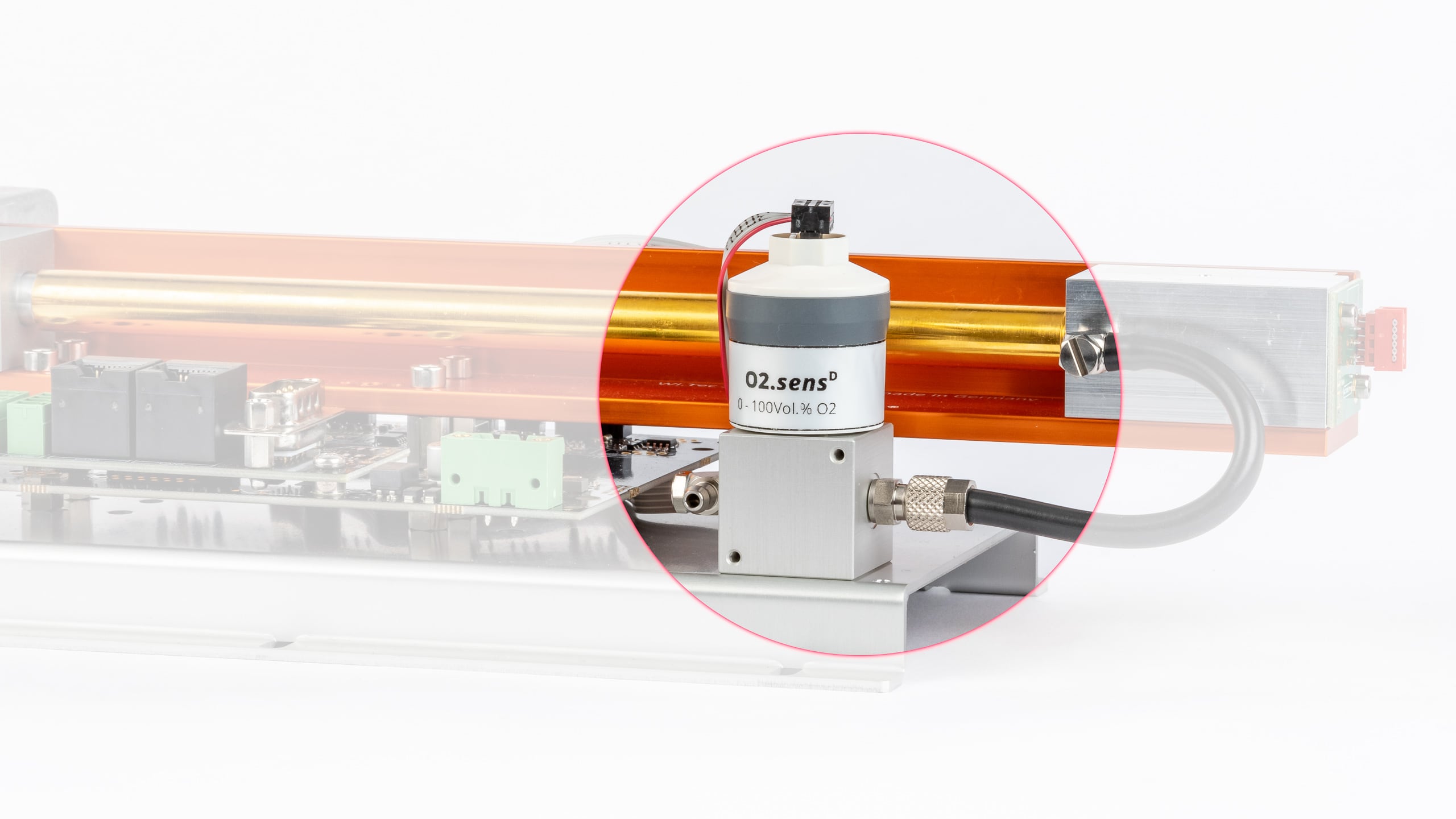
Visão geral
Especificações
Características Gerais
Versão Versão padrão Versão resistente a H2S Faixa de medição 0 – 25 Vol.% O2 0 – 100 Vol.% O2 0,5 – 35 Vol.% O2 Aplicativo Biogás, analisador de gás de escapamento automotivo Industrial, totalmente resistente a CO2 Industrial, totalmente resistente a CO2,
apresenta alta resistência a gases ácidosMateriais de contato médio ABS, FKM, PPS, PTFE, aço inoxidável ABS, PVC, PPS, PTFE, aço inoxidável ABS, PVC, PPS, PTFE,
aço inoxidávelVida operacional esperada 1.000.000 Vol.% O2 h ~ 1.200.000 Vol.% O2 h ~ 1.200.000 Vol.% O2 h Vida útil do sensor 4 anos em ar ambiente,
dependendo da aplicação6 anos em ar ambiente,
dependendo da aplicação6 anos em ar ambiente Dimensão
(A x L x C)65,4 mm × 31,7 mm × 56,6 mm Peso 70 g Conector de tubo 4/6 mm tubo Dados de medição *
Versão Versão padrão Versão resistente a H2S Faixa de medição 0 – 25 Vol.% O2 0 – 100 Vol.% O2 0,5 – 35 Vol.% O2 Resolução 0,1 Vol.% 0,1 Vol.% 0,1 Vol.% Tempo de resposta (t90) < 3,5 s < 10 s < 5 s desvio ** < 1% ao mês < 1% ao mês < 3% ao mês Erro de linearidade 0 – 2 Vol.% O2: ± 0,1 abs.
2,1 – 100 Vol.% O2: ± 0,05 rel.0 – 2 Vol.% O2: ± 0,1 abs.
2,1 – 35 Vol.% O2: ± 0,05 rel.Repetibilidade *** ± 1 Vol.% O2 ± 1 Vol.% O2 Influência da umidade –0,03 % rel. Valor medido de O2 /
% RH–0,03 % rel. Valor medido de O2 /
% RH–0,03 % rel. Valor medido de O2 /
% RHInterferências CO2: até 20 Vol.%
CO: até 2000 ppm
NOx: até 5000 ppm
HC: até 5000 ppm
N2O: até 500 ppm< 20 ppm O2 resposta a:
100 Vol.% CO
100 Vol.% CO2
100 Vol.% C3H8
3000 ppm NO em N2
1000 ppm C6H6 em N2
500 ppm SO2 em N2
< 100 ppm O2 resposta a:
3000 ppm C2H6O
3000 ppm C4H10S
< 200 ppm O2 resposta a:
3000 ppm C2H6S2
< 400 ppm O2 resposta a:
100 Vol.% H2
< 500 ppm O2 resposta a:
2000 ppm H2S em N2< 20 ppm O2 resposta a:
100 Vol.% CO
100 Vol.% CO2
100 Vol.% C3H8
1000 ppm C6H6 em N2
2000 ppm H2S em N2
< 20000 ppm O2 resposta a:
3000 ppm NO em N2
1000 ppm H2 em N2
500 ppm SO2 em N2
** média de 12 meses
*** @ 100 Vol.% O2 aplicado por 5 minutosParâmetros de gás
Versão Versão padrão Versão resistente a H2S Faixa de medição 0 – 25 Vol.% O2 0 – 100 Vol.% O2 0,5 – 35 Vol.% O2 Temperatura de funcionamento 0 – 40 °C
intermitente 40 – 50 °C0 – 45 °C 0 – 50 °C Temperatura de armazenamento -20 – 40 °C
5 – 25 °C recomendado
40 – 50 °C máx. 1 semana5 – 30 °C recomendado
-20 – 50 °C máximoPressão do ar 650 – 1250 hPa (mbar) 700 – 1250 hPa (mbar) 600 – 1250 hPa (mbar) Umidade ambiente 0 – 95% umidade rel. (sem condensação) Sensor de pressão
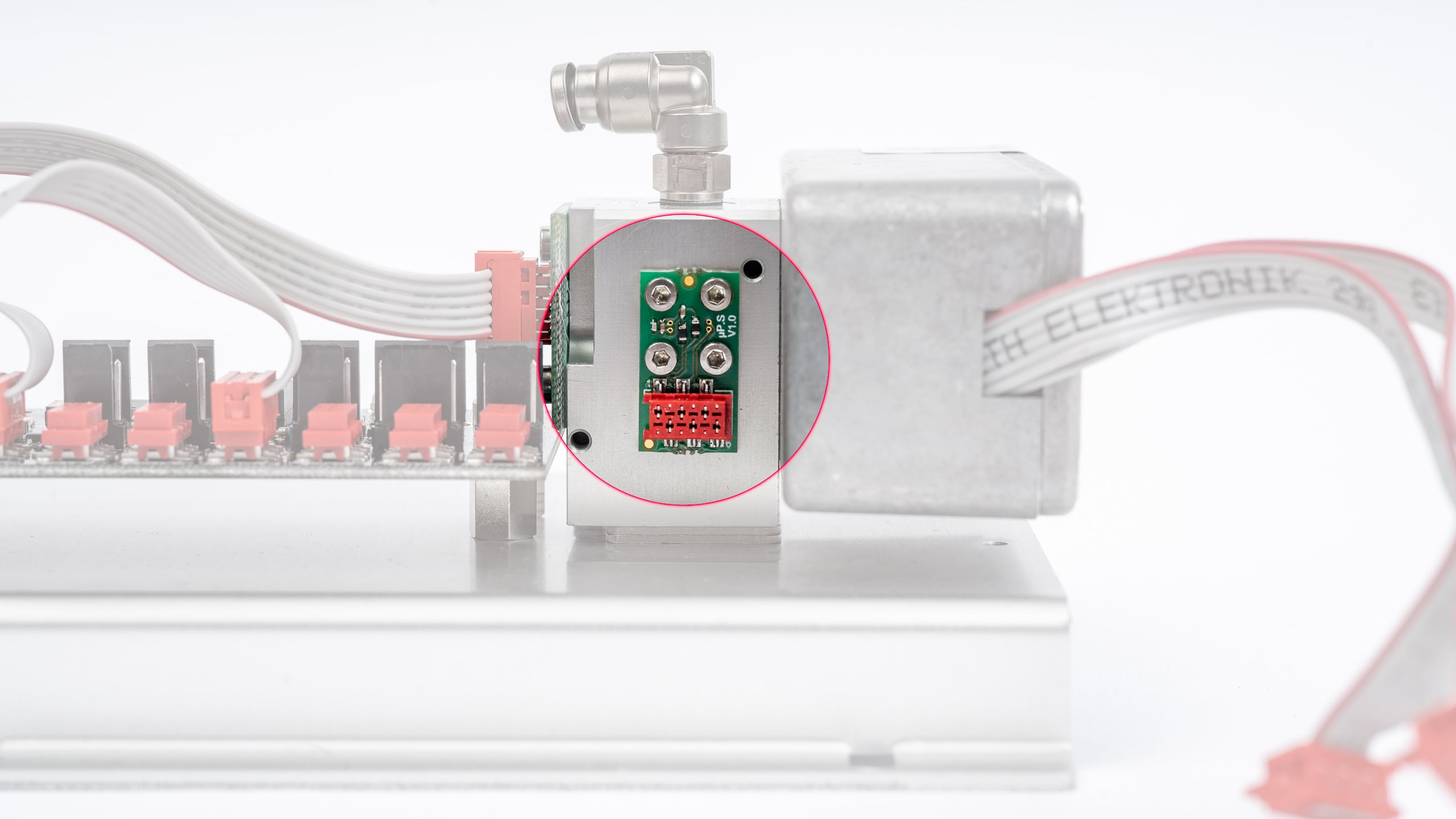
Visão geral
Especificações
Sensor de Umidade
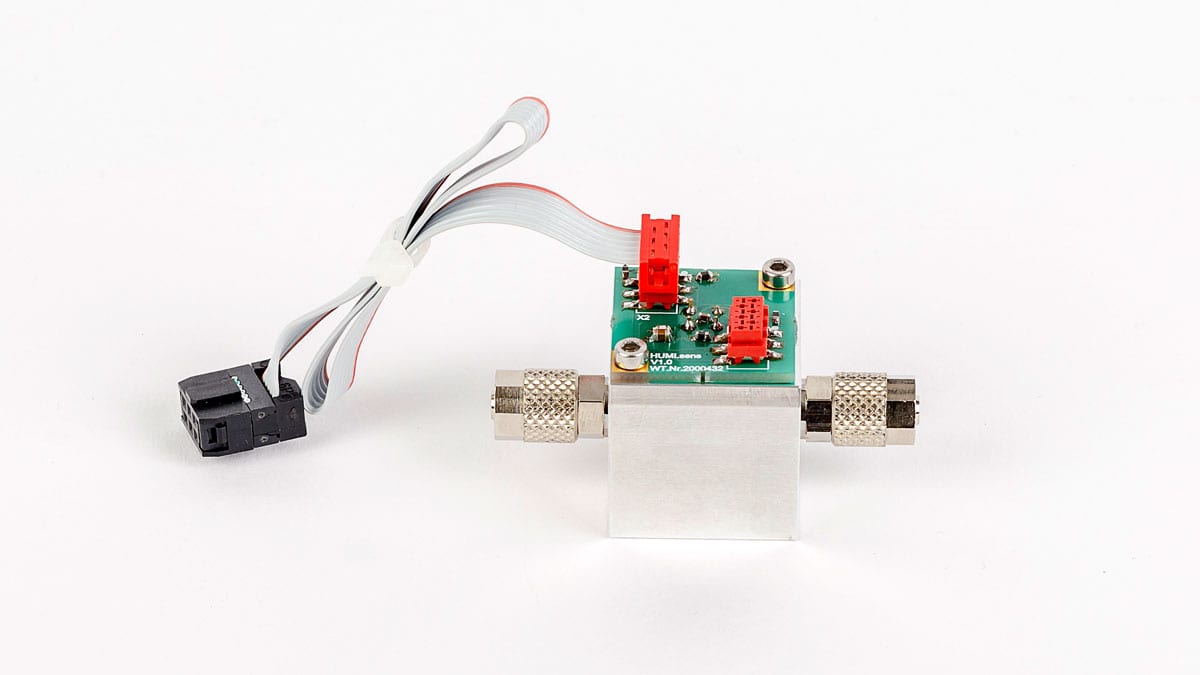
Visão geral
Especificações
RITTER »MultiGas« Módulo de ajuste do ponto zero (Ar)
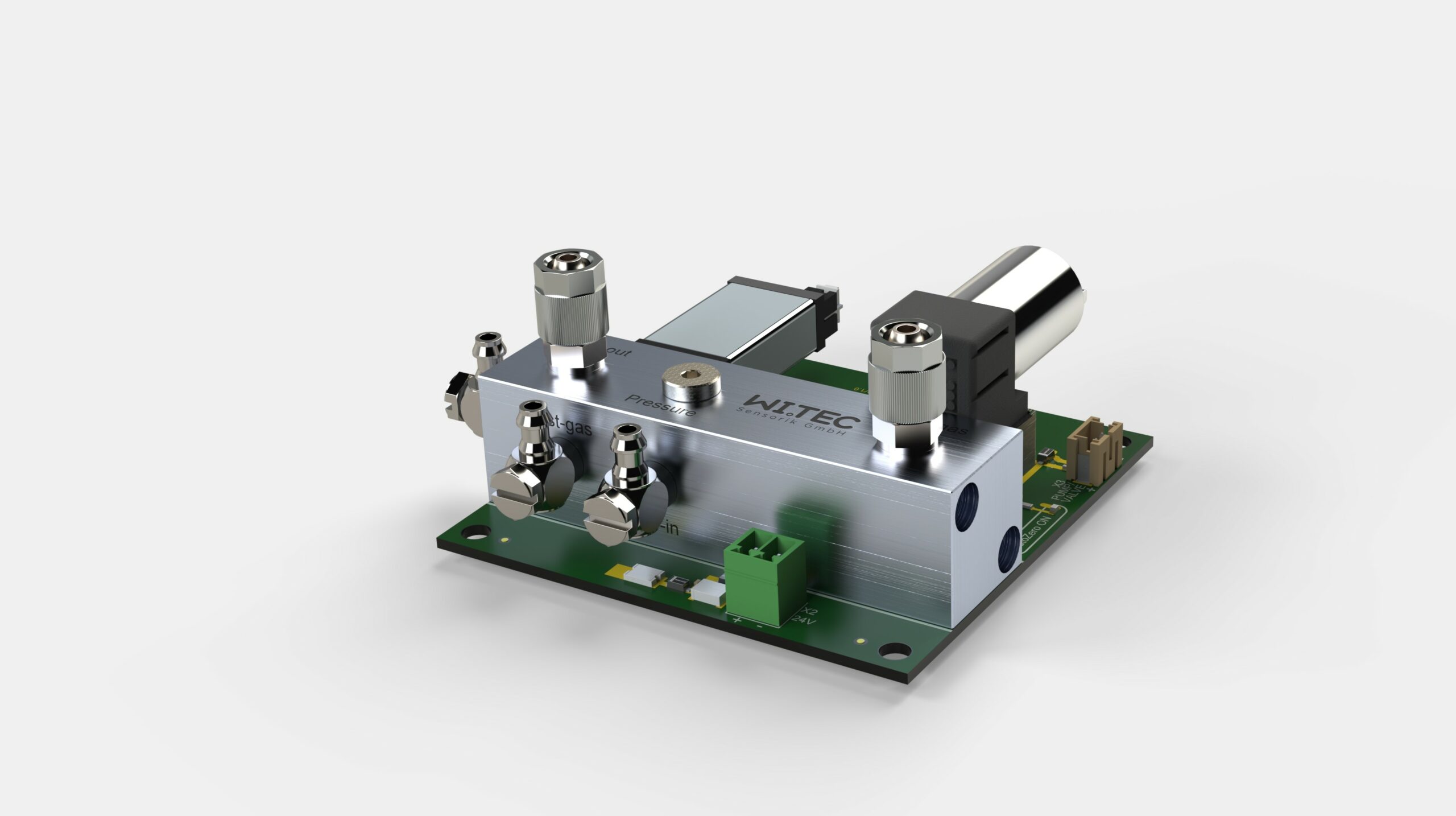
Visão geral
Características
Especificações
Queda de pressão
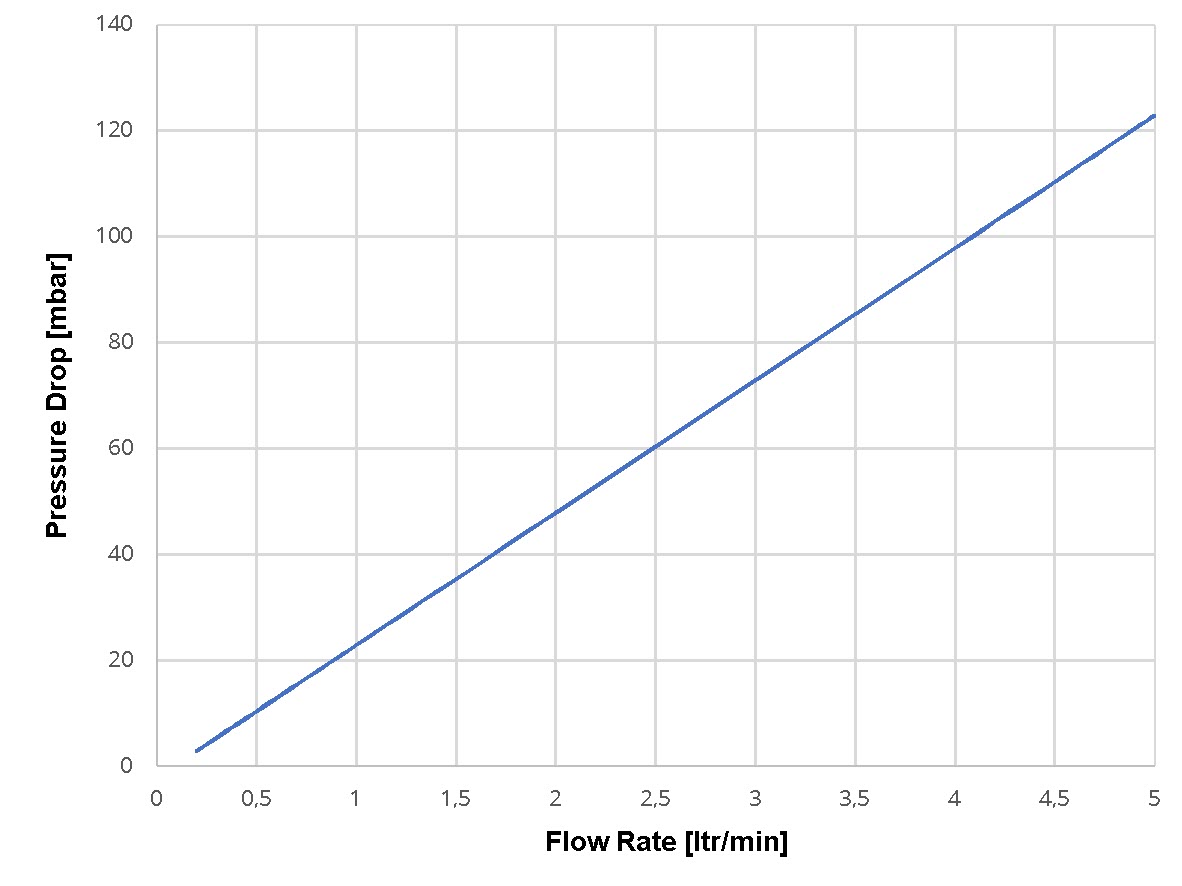
Diagrama do circuito
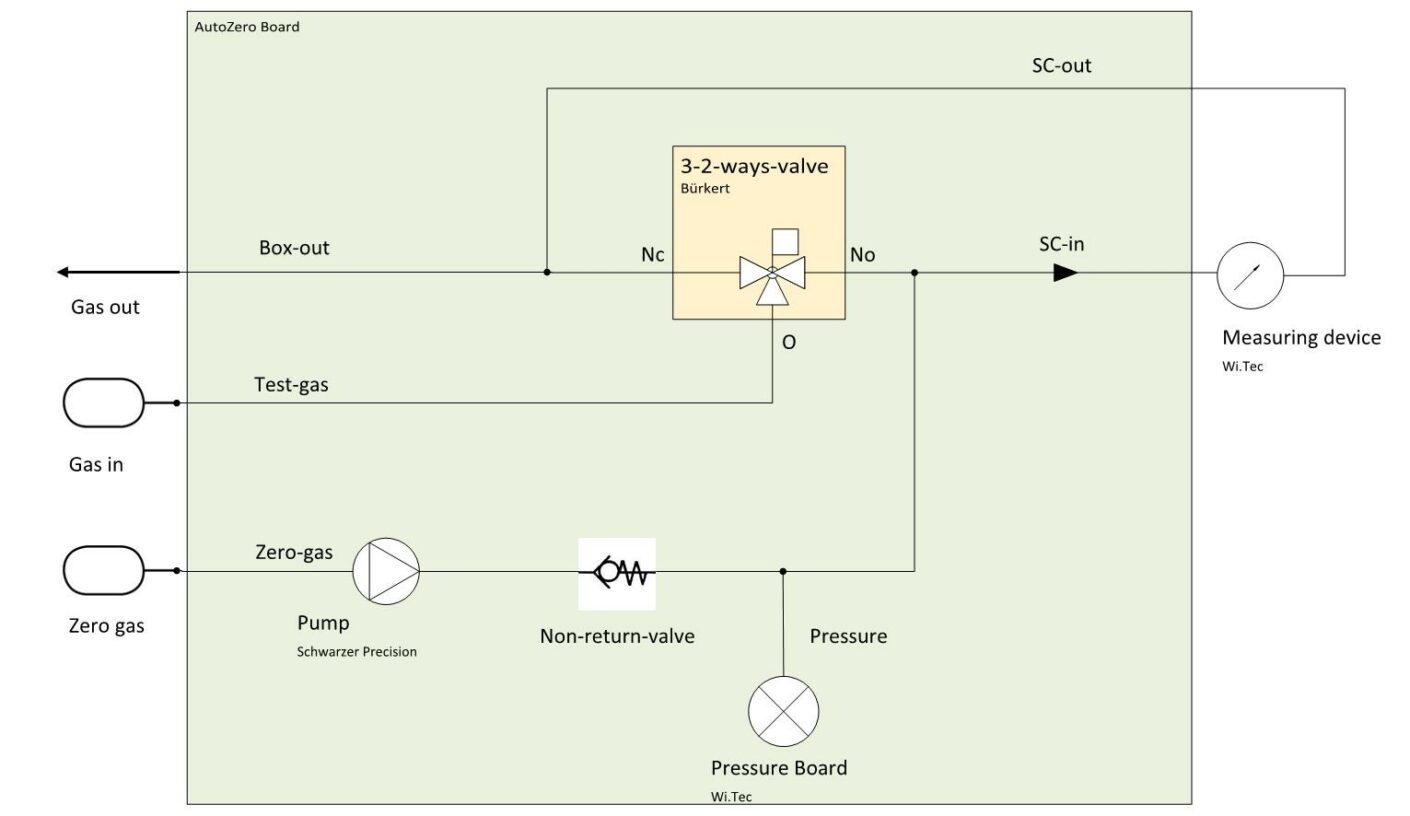
RITTER »MultiGas« Módulo de ajuste do ponto zero (N2)

Visão geral
Características
Especificações
Queda de pressão

Diagrama do circuito
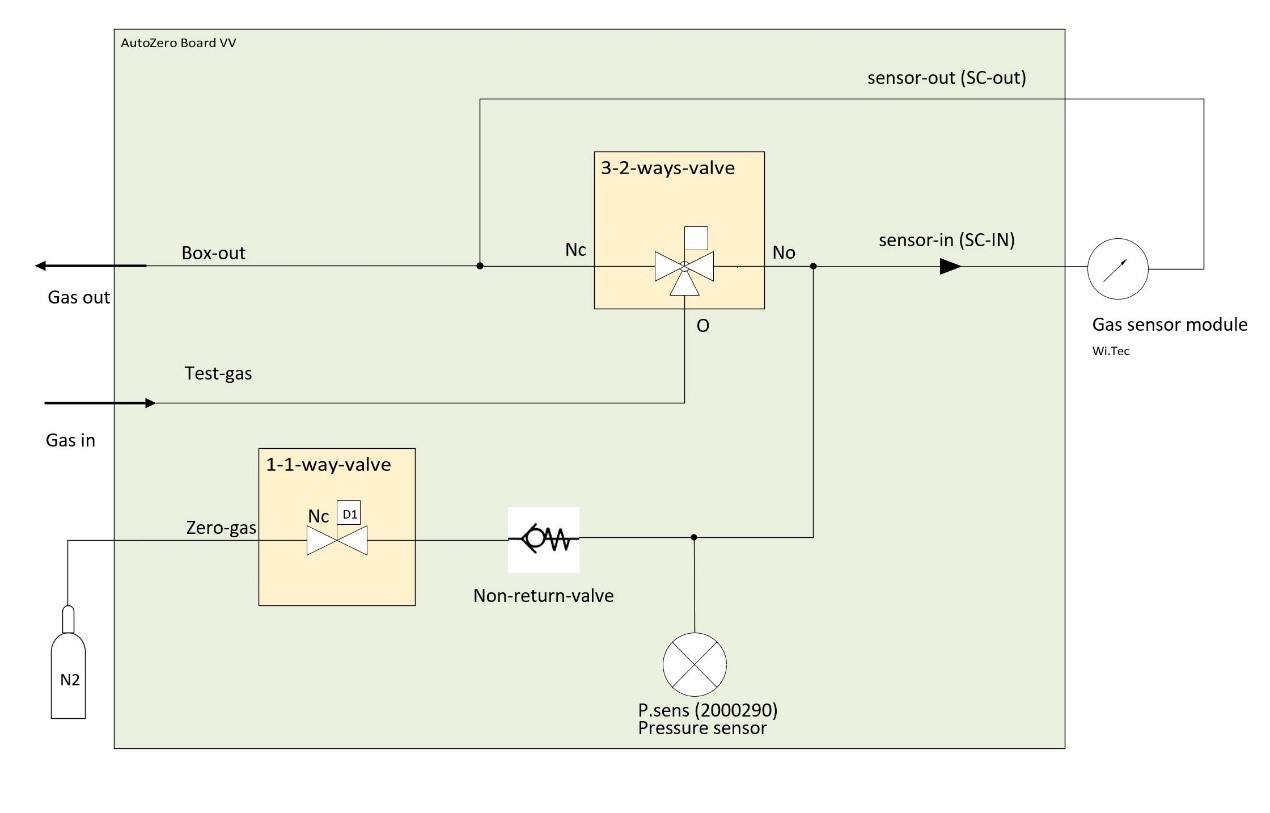
Tensão analógica de saída
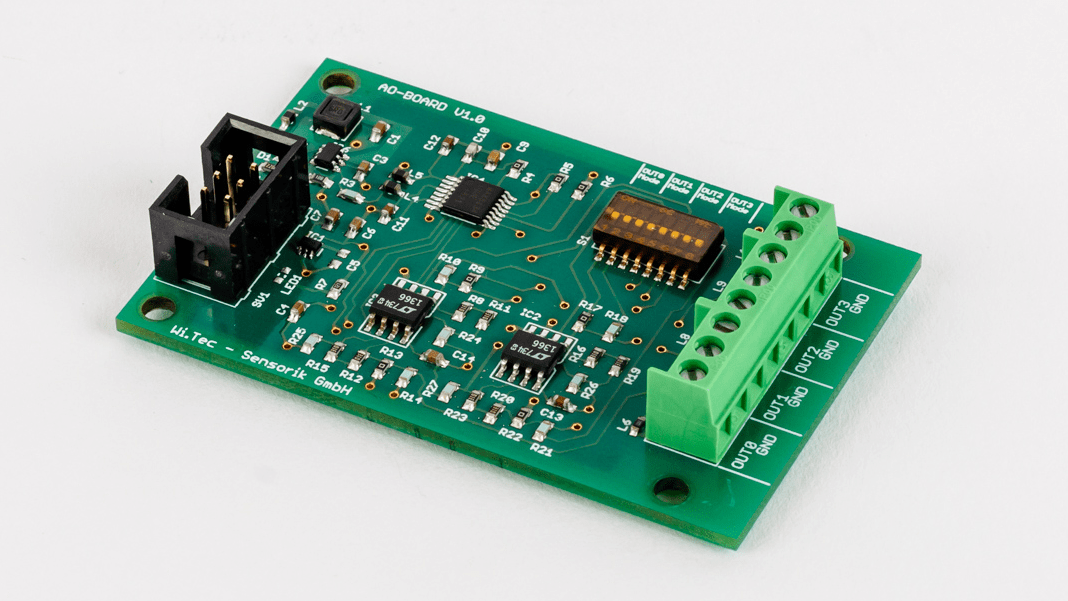
Visão geral
Dados técnicos


Nº de contato Atribuição ao canal Cores dos fios do cabo de conexão fornecido 1 canal 1 branco 2 canal 2 verde 3 canal 3 amarelo 4 canal 4 cinza 5 massa marrom Aquecimento e termostato da carcaça do sensor
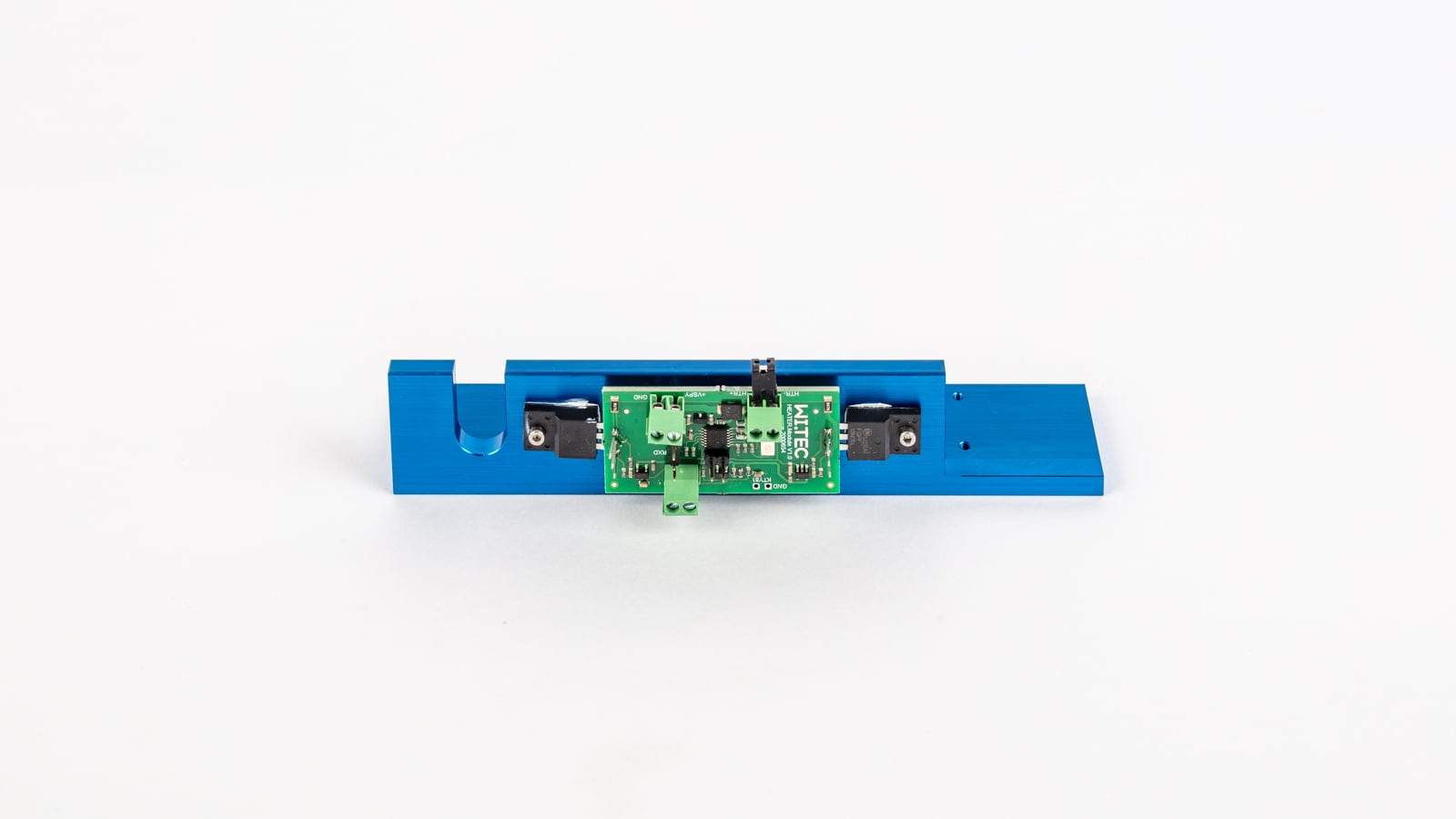
Visão geral
Características
Filtro
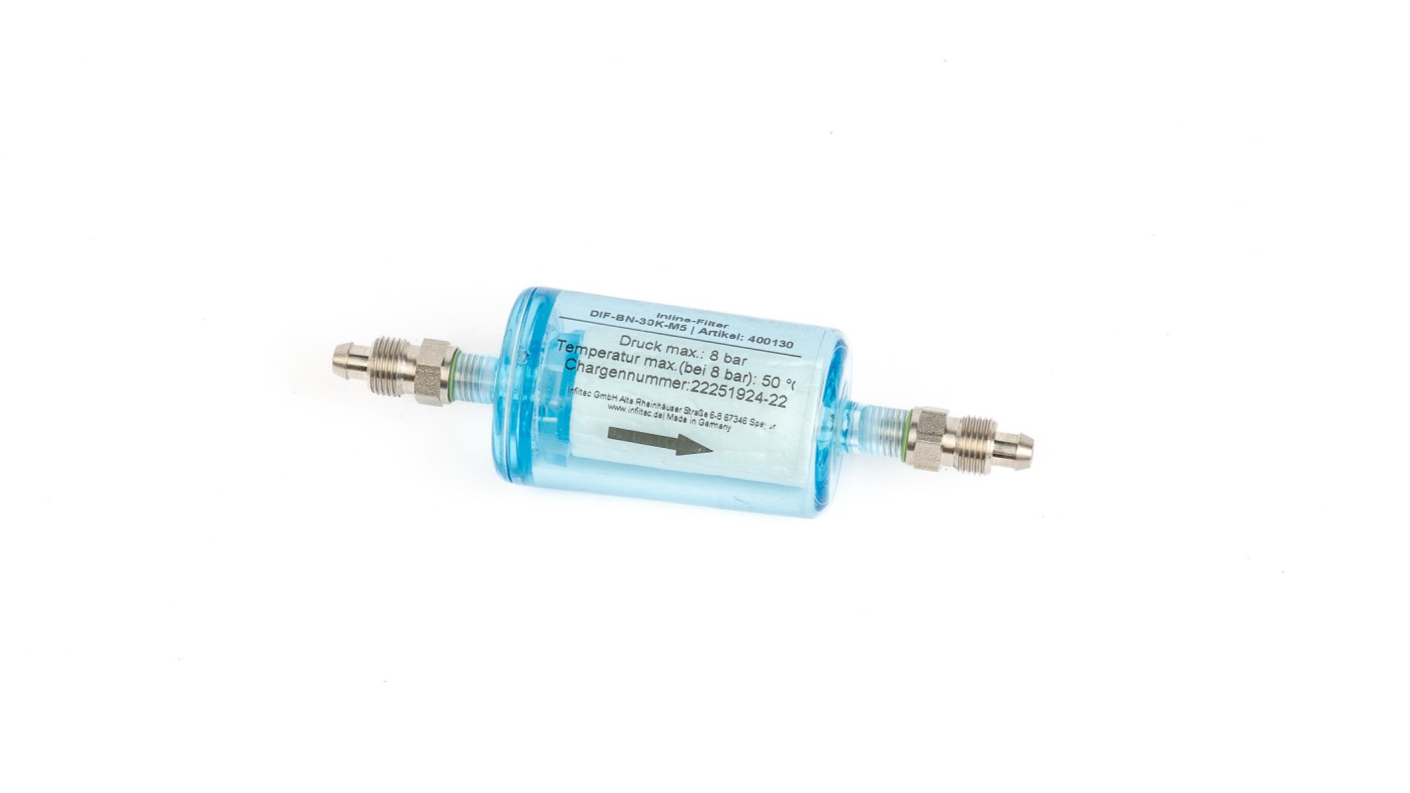
Visão geral
Descrição
Aplicativos
Características
Dimensão
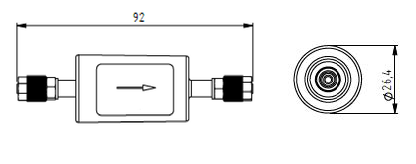
Especificações
Características Gerais
Dimensão Ø 26,4 mm x 92 mm Peso 26 g Conector de tubo 4/6 mm tubo Vazão 0 – 4 ltr/min Aplicativo Filtro de partículas Volume do alojamento 110 ml Materiais de contato médio Poliamida (carcaça), aço inoxidável (conector), FKM (O-ring) Intervalo de troca Depende da contaminação do gás Queda de pressão (mbar) @ 1 ltr/min < 6 mbar Parâmetros de gás
Temperatura de funcionamento -5 °C – 60 °C Temperatura de armazenamento -20 °C – 110 °C Pressão máxima 8 bar Umidade ambiente 0 – 95% umidade rel. (sem condensação) 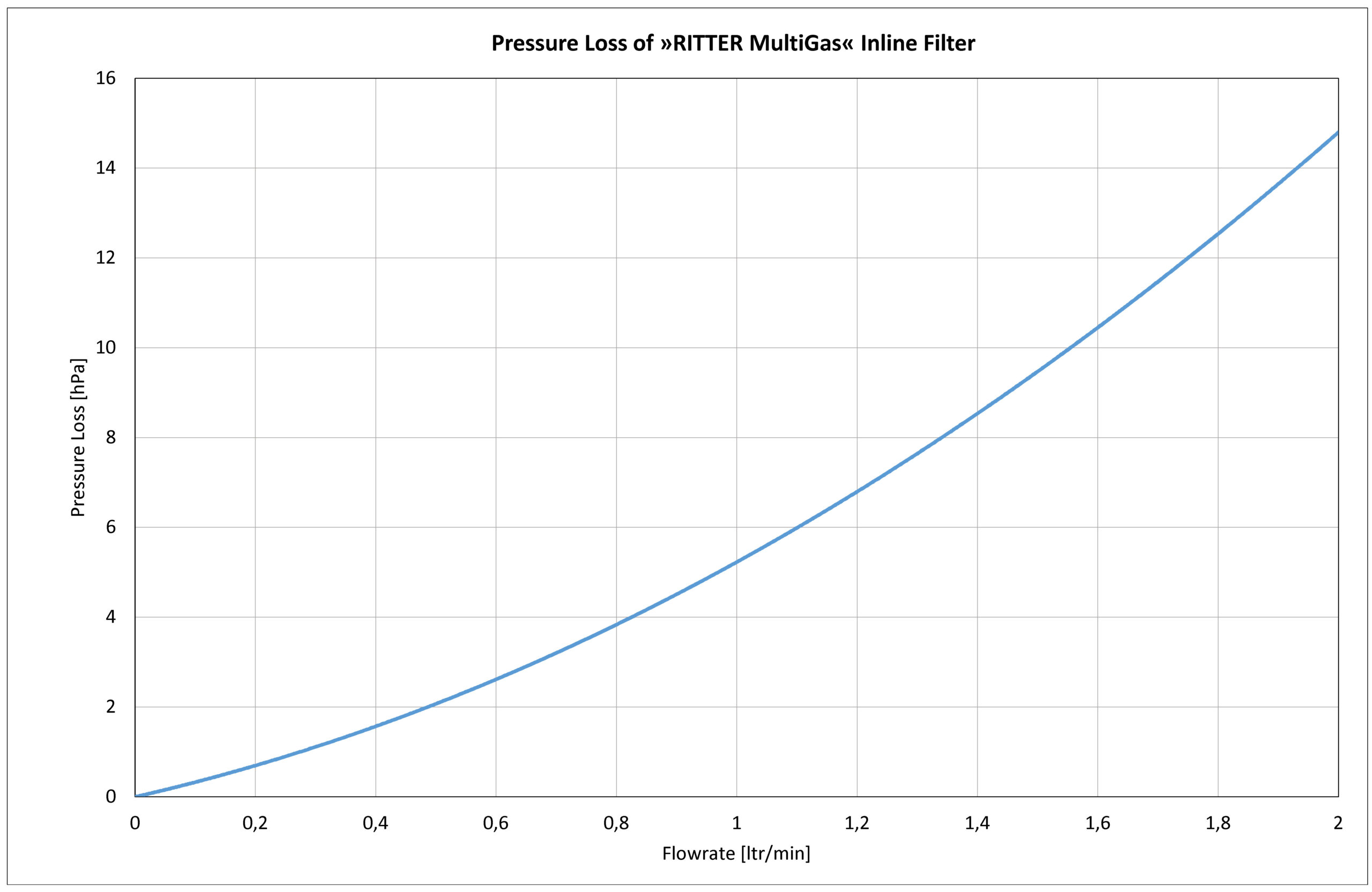
Bomba para amostragem de gás
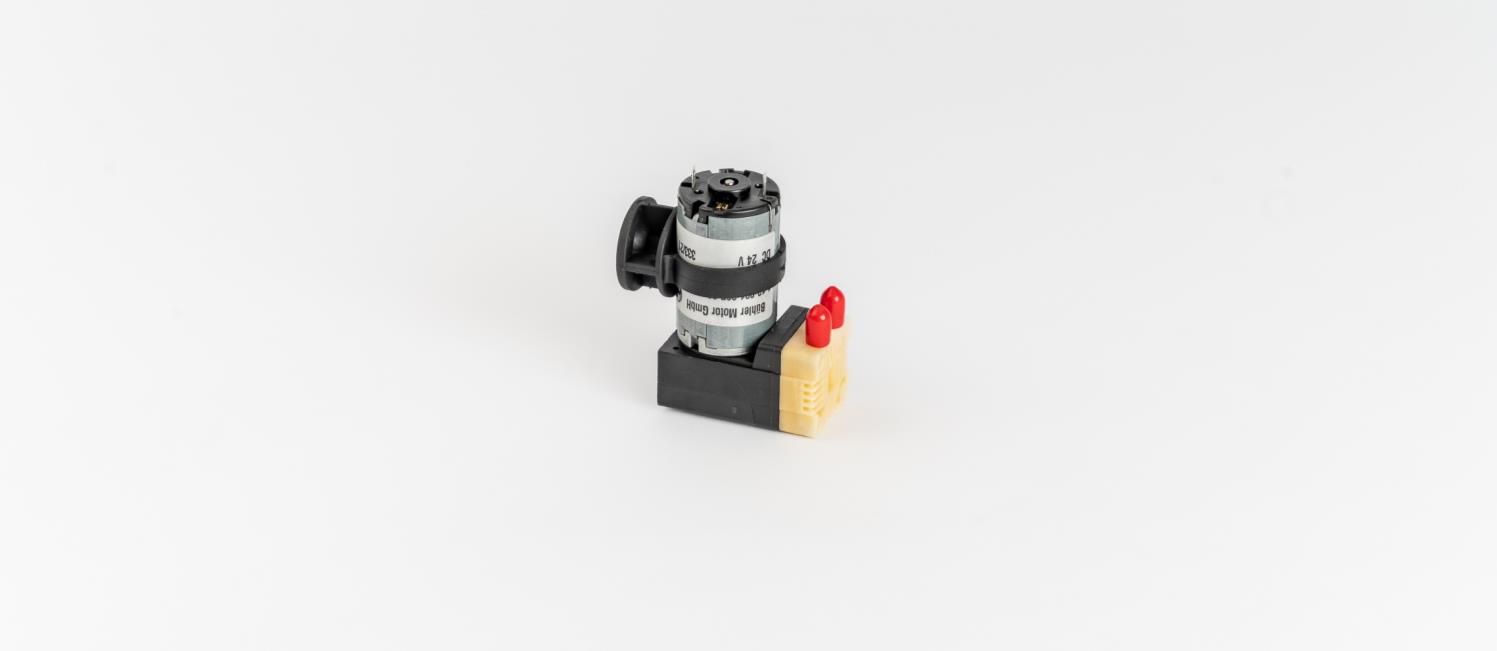
Visão geral
Aplicativos
Características
Dimensão

Especificações
Características Gerais
Tensão operacional 24 VDC Corrente nominal máxima 330 mA Conector pneumático 4/6 mm tubo Taxa de fluxo 0 – 4,5 ltr/min Pressão máxima 1,7 bar Vácuo máximo -620 mbar Materiais de contato médio PVDF (cabeçote da bomba)
PTFE (membranas)
FFKM (válvula e vedação)Peso 184 g Dimensão L x A x C 31 mm x 54 mm x 81,5 mm Parâmetros de gás
Temperatura de funcionamento 5 °C – 50 °C Temperatura de armazenamento -20 °C – 60 °C Umidade ambiente 0 – 95% umidade rel. (sem condensação) Diagrama de desempenho
